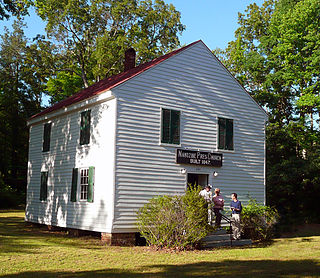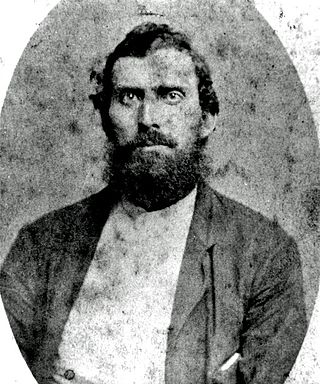| This article is part of a series on the |
| History of the United States |
|---|
 |
This is a bibliography of works on the military history of the United States.
| This article is part of a series on the |
| History of the United States |
|---|
 |
This is a bibliography of works on the military history of the United States.

The War of 1812 was fought by the United States of America and its indigenous allies against the United Kingdom and its own indigenous allies in British North America, with limited participation by Spain in Florida. It began when the United States declared war on 18 June 1812. Although peace terms were agreed upon in the December 1814 Treaty of Ghent, the war did not officially end until the peace treaty was ratified by Congress on 17 February 1815.
The military history of the United States spans over two centuries, the entire history of the United States. During those centuries, the United States evolved from a newly formed nation which fought for its independence from the Kingdom of Great Britain (1775–1783) to world superpower status in the aftermath of World War II to the present. As of 2021, the United States Armed Forces consists of the Army, Marine Corps, Navy, Air Force and Space Force, all under the command of the Department of Defense, and the Coast Guard, which is controlled by the Department of Homeland Security.

The United States Department of War, also called the War Department, was the United States Cabinet department originally responsible for the operation and maintenance of the United States Army, also bearing responsibility for naval affairs until the establishment of the Navy Department in 1798, and for most land-based air forces until the creation of the Department of the Air Force on September 18, 1947.

During the American Civil War, the United States of America (USA) was referred to as the Union, also known colloquially as the North, after eleven Southern slave states seceded to form the Confederate States of America (CSA), which was called the Confederacy, also known as the South. The name the "Union" arose from the declared goal of the United States, led by President Abraham Lincoln, of preserving the United States as a constitutional union.

Russell Frank Weigley(WY-glee) was the Distinguished University Professor of History at Temple University in Philadelphia, Pennsylvania, and a noted military historian. His research and teaching interests centered on American and world military history, World War II, and the American Civil War. One of Weigley's most widely received contributions to research is his hypothesis of a specifically American Way of War, i.e. an approach to strategy and military operations, that, while not predetermined, is distinct to the United States because of cultural and historical constraints.

The Battle of Namozine Church was an engagement in Amelia County, Virginia, between Union Army and Confederate States Army forces that occurred on April 3, 1865, during the Appomattox Campaign of the American Civil War. The battle was the first engagement between units of General Robert E. Lee's Confederate Army of Northern Virginia after that army's evacuation of Petersburg and Richmond, Virginia, on April 2, 1865, and units of the Union Army under the immediate command of Maj. Gen. Philip Sheridan, who was still acting independently as commander of the Army of the Shenandoah, and under the overall direction of Union General-in-Chief Lt. Gen. Ulysses S. Grant. The forces immediately engaged in the battle were brigades of the cavalry division of Union Brig. Gen. and Brevet Maj. Gen. George Armstrong Custer, especially the brigade of Colonel and Brevet Brig. Gen. William Wells, and the Confederate rear guard cavalry brigades of Brig. Gen. William P. Roberts and Brig. Gen. Rufus Barringer and later in the engagement, Confederate infantry from the division of Maj. Gen. Bushrod Johnson.
The Official Records of the Union and Confederate Armies in the War of the Rebellion, commonly known as the Official Records of the Union and Confederate Armies or Official Records, is the most extensive collection of American Civil War land warfare records available to the general public. It includes selected first-hand accounts, orders, reports, maps, diagrams, and correspondence drawn from official records of both Union and Confederate armies.
The Battle of Amelia Springs, Virginia was an engagement between the Union Army and Confederate Army of Northern Virginia that occurred on April 5, 1865 during the Appomattox Campaign of the American Civil War. It was followed by a second rear guard action near the same location on the night of April 5, 1865 and morning of April 6, 1865 during the Union Army pursuit of the Confederate forces which were fleeing westward after the fall of Petersburg and Richmond, Virginia at the Third Battle of Petersburg on April 2, 1865. The actions took place just prior to the Battle of Sailor's Creek on April 6, 1865. That battle would be the last major engagement between the Union Army under the overall direction of Union General-in-Chief, Lt. Gen. Ulysses S. Grant, and General Robert E. Lee's Army of Northern Virginia before that Confederate army's surrender at Appomattox Court House, Virginia on April 9, 1865.

The Society for Military History is a United States–based international organization of scholars who research, write, and teach military history of all time periods and places. It includes naval history, air power history, and studies of technology, ideas, and homefronts. It publishes the quarterly refereed The Journal of Military History.

Francis "Frank" Crawford Armstrong was a United States Army cavalry officer and later a brigadier general in the Confederate States Army during the American Civil War. He is also known for being the only Confederate general to fight on both sides during the Civil War.
The War of 1812 bibliography is a selective, annotated bibliography using APA style citations of the many books related to the War of 1812. There are thousands of books and articles written about this topic. Only the most useful are presented.

This list contains a selection of books on World War I, using APA style citations.

In the United States, Southern Unionists were white Southerners living in the Confederate States of America opposed to secession. Many fought for the Union during the Civil War. These people are also referred to as Southern Loyalists, Union Loyalists, or Lincoln's Loyalists. Pro-Confederates in the South derided them as "Tories". During Reconstruction, these terms were replaced by "scalawag", which covered all Southern whites who supported the Republican Party.
The Thanks of Congress is a series of formal resolutions passed by the United States Congress originally to extend the government's formal thanks for significant victories or impressive actions by American military commanders and their troops. Although it began during the American Revolutionary War, the practice peaked during the American Civil War. Similarly, the Confederate Congress also passed resolutions honoring extraordinary performance to individuals or military units.
The military history of England and Wales deals with the period prior to the creation of the United Kingdom of Great Britain in 1707.(for the period after 1707 see Military history of the United Kingdom)

The military career of Napoleon Bonaparte spanned over 20 years. He led French armies in the French Revolutionary Wars and later, as emperor, in the Napoleonic Wars. Despite his rich war-winning record, Napoleon's military career ended in defeat. Napoleon has since been regarded as a military genius and one of the finest commanders in history. His wars and campaigns have been studied at military schools worldwide. He fought more than 80 battles, losing only eleven, mostly towards the end when the French army was not as dominant. The French dominion collapsed rapidly after the disastrous invasion of Russia in 1812. Napoleon was defeated in 1814 and exiled to the island of Elba, before returning and was finally defeated in 1815 at Waterloo. He spent his remaining days in British custody on the remote volcanic tropical island of Saint Helena.
For his life and a basic reading list see Napoleon I of France

This timeline of events leading to the American Civil War is a chronologically ordered list of events and issues that historians recognize as origins and causes of the American Civil War. These events are roughly divided into two periods: the first encompasses the gradual build-up over many decades of the numerous social, economic, and political issues that ultimately contributed to the war's outbreak, and the second encompasses the five-month span following the election of Abraham Lincoln as President of the United States in 1860 and culminating in the capture of Fort Sumter in April 1861.
The following is a list of important scholarly resources related to James Monroe, the fifth president of the United States. for a comprehensive older guide see Harry Ammon, James Monroe: A Bibliography.